
Big Bend National Park is an American national park located in West Texas, bordering Mexico. The park has national significance as the largest protected area of Chihuahuan Desert topography and ecology in the United States, and was named after a large bend in the Rio Grande/Río Bravo. The park protects more than 1,200 species of plants, more than 450 species of birds, 56 species of reptiles, and 75 species of mammals. Additional park activities include scenic drives, programs led by Big Bend park rangers, and stargazing.

Indian Village is a historic, affluent neighborhood located on Detroit's east side, bound to the north and south by Mack Avenue and East Jefferson Avenue, respectively, along the streets of Burns, Iroquois, and Seminole. The district was listed on the National Register of Historic Places in 1972.

Hampton University is a private, historically Black, research university in Hampton, Virginia. Founded in 1868 as Hampton Agricultural and Industrial School, it was established by Black and White leaders of the American Missionary Association after the American Civil War to provide education to freedmen. The campus houses the Hampton University Museum, which is the oldest museum of the African diaspora in the United States and the oldest museum in the commonwealth of Virginia. First led by former Union General Samuel Chapman Armstrong, Hampton University's main campus is located on 314 acres in Hampton, Virginia, on the banks of the Hampton River. The university offers 90 programs, including 50 bachelor's degree programs, 25 master's degree programs and nine doctoral programs. The university has a satellite campus in Virginia Beach and also has online offerings. Hampton University is home to 16 research centers, including the Hampton University Proton Therapy Institute, the largest free-standing facility of its kind in the world. Hampton University is classified among "R2: Doctoral Universities – High research activity."
Plaquemine High School is a coeducational public high school located at 59595 Belleview Drive in unincorporated Iberville Parish, Louisiana, United States, south of the City of Plaquemine. It schools grades seven to twelve and is administered by the Iberville Parish School Board.
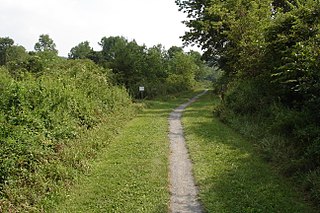
Jacobsburg Environmental Education Center is a 1,168-acre (473 ha) Pennsylvania state park near Wind Gap, in Bushkill Township, Northampton County in Pennsylvania, in the United States. The Jacobsburg National Historic District is almost entirely surrounded by the park. Jacobsburg Environmental Education Center is just off the Belfast exit of Pennsylvania Route 33.

Wheelock Academy was the model academy for the Five Civilized Tribes' academies. It was started as a missionary school for Choctaw girls, and is still owned by the Choctaw nation. The school closed in 1955 and the only remaining Choctaw school, Jones Academy, became coeducational. The site is located 3 miles (4.8 km) east of Millerton in McCurtain County, Oklahoma. It is owned by the Choctaw Nation and is administered by the Bureau of Indian Affairs.
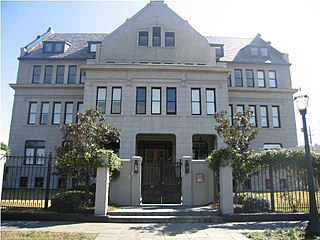
The Convent of Mercy, known today as the St. Francis Place Condominiums, is a small complex of historic Roman Catholic religious buildings in Mobile, Alabama, United States. It consists of two buildings, the former convent and the former school. They were added to the National Register of Historic Places on April 24, 1992 as a part of the Historic Roman Catholic Properties in Mobile Multiple Property Submission. It, along with the Convent and Academy of the Visitation, is one of two surviving historic convent complexes in Mobile.
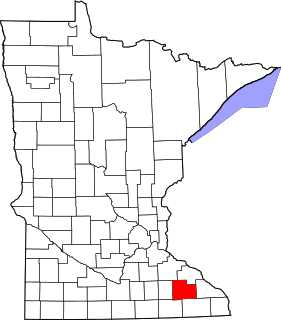
This is a list of the National Register of Historic Places listings in Olmsted County, Minnesota. It is intended to be a complete list of the properties and districts on the National Register of Historic Places in Olmsted County, Minnesota, United States. The locations of National Register properties and districts for which the latitude and longitude coordinates are included below, may be seen in an online map.

Saint Joseph School is a private, Catholic school located on Gould Street in Wakefield, Massachusetts. It serves students from preschool to 8th grade.

Wheelock Church is a historic church building in Millerton, McCurtain County, Oklahoma. Built in 1845-6, the existing stone structure is the oldest surviving church building in the state of Oklahoma and the oldest church congregation among the Choctaw nation. The building was added to the National Register of Historic Places in 1972.

The Matthew Fontaine Maury School, in Fredericksburg, Virginia, is an historic school building noted for its Colonial Revival architecture and design as well as its significance in the entertainment and cultural life of Fredericksburg. The architect of the building was Philip Stern. Built in 1919-1920, the school was used from then until 1952 for both elementary and high-school students. After the construction of James Monroe High School, the building was used as an elementary- and middle-school. The school was closed in 1980. Maury School was added to the National Register of Historic Places in March 2007.
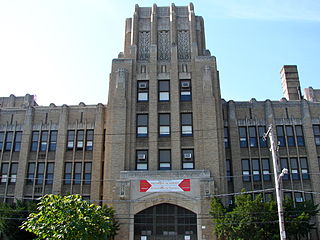
The Promise Academy at Roberts Vaux High School is a historic high school building located in the North Central neighborhood of Philadelphia, Pennsylvania. It was designed by Irwin T. Catharine and built in 1936–1938. It is a four-story, 23 bay, "U"-shaped yellow brick building in a Moderne / Art Deco-style. It features projecting end pavilions, terra cotta decorative work, and a two-story stone Tudor-arched entryway. It was named for American jurist, abolitionist, and philanthropist Roberts Vaux (1786-1836). Jacob C. White, Jr. served as principal from 1864 to 1896 and was the first black school principal in Philadelphia. During his tenure, White reformed the institute and became the leading figure in the field of urban education in Philadelphia.
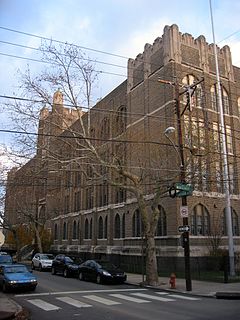
Penn Treaty School is a grade 6-12 school in Fishtown, Philadelphia, Pennsylvania. A part of the School District of Philadelphia, it was formerly Penn Treaty Junior High School and Penn Treaty Middle School.

William M. Meredith School is a public K-8 school located in the Queen Village neighborhood of Philadelphia, Pennsylvania. It is a part of the School District of Philadelphia.

Bennington No. 4, also known as the Bennington School, is a one-room schoolhouse near Waterloo, Iowa. Built in 1911, it served four sections which provided as many as thirty or more students for first through eighth grades. Students in higher grades attended Waterloo East High School. The school served the predominantly German-American community until 1955 when it was closed. While it was open, the school also served as a community center. In 1958 the vacant building was sold to the local Sage family, whose members had attended and taught at the school. Restoration work took place through the 1990s.

Indian Springs Park is a public park located on the east side of Davenport, Iowa, United States. The park is located on 3 acres (1.2 ha) in a natural depression north of East River Drive and to the west of a railroad trestle bridge. The land was donated to the city in 1921 by Mrs. D.N. Richardson with the expressed purpose of creating a park. The property contains a spring that was used by Native Americans, from which the park derives its name, as well as early travelers and the areas first settlers. The spring itself was capped in 1929 and a pipe 6 inches (15 cm) in diameter directs the water into a storm drain. During the high water season in the spring the park's basin fills with spring water and shore birds return to nest. The park, which is largely undeveloped, has served as a play area for the neighborhood children, students from neighboring Hoover Elementary School, and later the day care that is housed there. The park is a contributing property in the Village of East Davenport Historic District, which was listed on the National Register of Historic Places in 1980. It was added to the Davenport Register of Historic Properties in 2005.

The Schoolhouse at Truxton Canyon Training School, which has also been known as the Truxton Canyon Indian School and as the Valentine Indian School, is a historic schoolhouse that was built in 1903. It was built using Colonial Revival architecture as a work of the Office of Indian Affairs, and was expanded, compatibly with the Colonial Revival style, in 1929. It was listed on the National Register of Historic Places in 2003.

Wisconsin School for the Deaf (WSD) is located in Delavan, Wisconsin. The school has been serving Wisconsin’s deaf and hard of hearing children since 1852. WSD has an average enrollment of 130 students.

A two-room schoolhouse is a larger version of the one-room schoolhouse, with many of the same characteristics, providing the facility for primary and secondary education in a small community or rural area. While providing the same function as a contemporary primary school or secondary school building, a small multi-room school house is more similar to a one-room schoolhouse, both being architecturally very simple structures. While once very common in rural areas of many countries, one and two-room schools have largely been replaced although some are still operating. Having a second classroom allowed for two teachers to operate at the school, serving a larger number of schoolchildren and/or more grade levels. Architecturally, they could be slightly more complex, but were still usually very simple. In some areas, a two-room school indicated the village or town was wealthier and more prosperous.



















